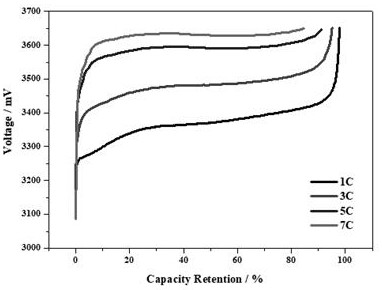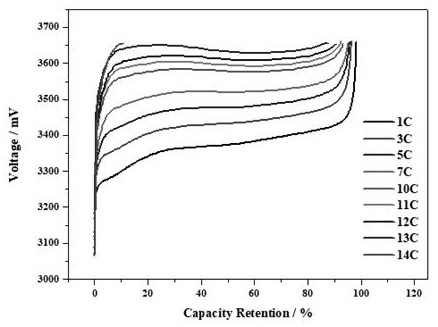Nanoscale graphene material dispersion process
A graphene and nano-scale technology, applied in the direction of inorganic chemistry, non-metallic elements, electrical components, etc., can solve the problems of increasing business operating costs and fixed asset investment, achieve excellent charging acceptance, and reduce the effect of agglomeration
- Summary
- Abstract
- Description
- Claims
- Application Information
AI Technical Summary
Problems solved by technology
Method used
Image
Examples
Embodiment 1
[0024] A nano-scale graphene material dispersion process is characterized in that it specifically comprises the steps:
[0025] Step 1, first wet the graphene composite conductive powder with n-butanol, add the surfactant SDBS to disperse, then place it in an ultrasonic cleaner for ultrasonic oscillation for 1 hour and take it out;
[0026] Step 2, taking dimethylformamide with a mass ratio of graphene composite conductive powder of 1:2, adding organic solvent dimethyl sulfoxide to fully dissolve it;
[0027] Step 3: Add the wetted graphene composite conductive powder into the dissolved dimethylformamide, stir and sonicate for 30 minutes, and heat to volatilize the organic solvent, then use ethylenediamine as the curing agent, and stir thoroughly Ultrasonic extrusion of bubbles to obtain preliminary modified graphene composite conductive powder;
[0028] Step 4, pretreatment, compounding the pre-modified graphene composite conductive powder with non-ionic high polymer (PVP) t...
Embodiment 2
[0033] A nano-scale graphene material dispersion process is characterized in that it specifically comprises the steps:
[0034] Step 1, first wet the graphene composite conductive powder with n-butanol, add surfactant SDBS to disperse, then put it in an ultrasonic cleaner for ultrasonic oscillation for 2 hours and take it out;
[0035] Step 2, taking the dimethylformamide whose mass ratio is 1:2 with the graphene composite conductive powder, adding the organic solvent acetone to fully dissolve it;
[0036] Step 3: Add the wetted graphene composite conductive powder into the dissolved dimethylformamide, stir and sonicate for 35 minutes, and heat to volatilize the organic solvent, then use ethylenediamine as the curing agent, and stir thoroughly Ultrasonic extrusion of bubbles to obtain preliminary modified graphene composite conductive powder;
[0037] Step 4, pretreatment, compounding the pre-modified graphene composite conductive powder with non-ionic high polymer (PVP) to s...
Embodiment 3
[0042] A nano-scale graphene material dispersion process is characterized in that it specifically comprises the steps:
[0043] Step 1, firstly wet the graphene composite conductive powder with n-butanol, add surfactant SDBS to disperse, then place it in an ultrasonic cleaner for ultrasonic oscillation for 3 hours and take it out;
[0044] Step 2, taking dimethylformamide with a mass ratio of graphene composite conductive powder of 1:2, adding organic solvent methyl ethyl ketone to fully dissolve it;
[0045] Step 3: Add the wetted graphene composite conductive powder into the dissolved dimethylformamide, stir and sonicate for 40 minutes, and heat to volatilize the organic solvent, then use ethylenediamine as the curing agent, and stir thoroughly Ultrasonic extrusion of bubbles to obtain preliminary modified graphene composite conductive powder;
[0046] Step 4, pretreatment, compounding the pre-modified graphene composite conductive powder with non-ionic high polymer (PVP) t...
PUM
 Login to View More
Login to View More Abstract
Description
Claims
Application Information
 Login to View More
Login to View More - R&D
- Intellectual Property
- Life Sciences
- Materials
- Tech Scout
- Unparalleled Data Quality
- Higher Quality Content
- 60% Fewer Hallucinations
Browse by: Latest US Patents, China's latest patents, Technical Efficacy Thesaurus, Application Domain, Technology Topic, Popular Technical Reports.
© 2025 PatSnap. All rights reserved.Legal|Privacy policy|Modern Slavery Act Transparency Statement|Sitemap|About US| Contact US: help@patsnap.com


